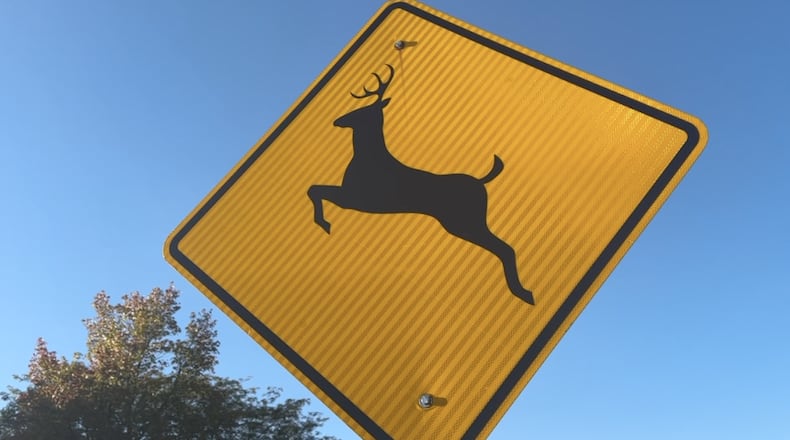The combination of harvesting fields pushing deer out of previous shelter, bucks chasing does through the mating season and increased traffic as dusk arrives earlier each day puts deer and drivers at a crossroads of where each wants to be. Your odds of hitting a deer vary greatly depending on where you’re traveling. Your greatest odds might not be where you think.
Nationally, Ohio ranks near the middle of the pack for the likelihood of a deer collision, depending on the source, with 109,507 deer-involved crashes on Ohio roadways since 2019. Nearby West Virginia tops every list. Why the difference?
It’s not strictly the deer density or the number of deer that live in a square mile that correlates with the number of deer strikes. In other words, the places with the most deer doesn’t automatically mean it will have the most incidents.
Nationally, the folks at The Meateater found a correlation in the top-ranking states for deer strikes in those with a high rural population. That might be true at a high level across the country. But zooming into county statistics for Ohio and things look a little different.
When comparing the maps of deer strikes and deer harvest, it appears to be a combination of human population, the number and types of roads and the deer density. For example, rural counties without major highways record some of the lowest numbers of collisions, even if they have high deer density, judging by hunter success rates. Rural counties with major highways and low deer harvest have relatively high numbers of collisions. Metro areas can be some of the most treacherous for drivers and deer.
How to really miss them
You should always be on the lookout for deer crossing the road and not just in areas with the wonky, disfigured antlered signs as reminders. As mentioned in previous columns, Whitetail deer inhabit every county in Ohio. The state patrol offers basic tips to avoid wrecks, such as scanning the road ahead, be extra cautious at dusk and dawn, and use high-beam headlights when you can. If a crash is unavoidable, brake but don’t swerve out of your lane.
I’ll add, if there is an area where you’ve seen deer before, either alive or previous unsuccessful crossings, be extra vigilant. That could indicate a common travel corridor, and deer are creatures of habit. Slow down around blind curves or other areas of limited visibility, and in areas where cover runs close to the road.
If you’re thinking about adding a deer whistle to your vehicle, go ahead, but don’t count on it dissuading a deer from crossing. Deer have excellent hearing and surely can detect a car or truck coming from a distance. The whistles haven’t been proven to discourage deer from crossing roadways or improve their timing in doing so. However, I did have an old truck with 220,000 plus miles that had whistles that never hit a deer. I had another truck more than 245,000 miles without a whistle that never hit a deer. Take that for what it’s worth.
There’s not really any good news if you do hit a deer, but if it happens, you can claim it. Section 1533.221 of the Ohio Revised Code outlines steps you need to take to legally take possession, the first step is reporting the collision.
Deer are … everywhere
The common (and accurate) perception is to be on the lookout for deer when driving in the country. But it doesn’t stop there. The reality is that deer are literally everywhere in Ohio. They don’t read the signs and could cross at any time. While that big buck is sneaking away unseen by hunters somewhere, its relatives are standing in the middle of the street somewhere staring at the headlights approaching. That’s just the way it is.
Devin Meister is a local outdoors and wildlife enthusiast and has a blog called “Average Guy Outdoors.” He is an Ohio University graduate. Reach him at meister.devin@gmail.com.
MORE ONLINE
Deer Strikes by County
dam.assets.ohio.gov/image/upload/statepatrol.ohio.gov/DeerCrashBulletin_2024.pdf
Deer Harvest by County
Ohio State Patrol Release
statepatrol.ohio.gov/media/all-news/ohio-continues-into-peak-time-for-deer-involved-crashes
The Meateater
www.themeateater.com/conservation/habitat/bar-room-banter-top-10-states-for-deer-vehicle-collisions
Claiming Struck Deer
codes.ohio.gov/ohio-revised-code/section-1533.121
About the Author



